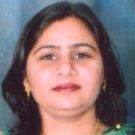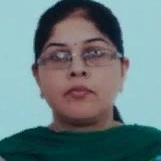International Journal of Wireless and Microwave Technologies (IJWMT)
IJWMT Vol. 6, No. 6, 8 Nov. 2016
Cover page and Table of Contents: PDF (size: 312KB)
Measurements of Dielectric Parameters of Aviation Fuel at X-Band Frequencies Using Cavity Perturbation Technique
Full Text (PDF, 312KB), PP.48-55
Views: 0 Downloads: 0
Author(s)
Index Terms
Complex Permittivity, Dielectric Constant, Dielectric Loss, Dielectric material, Cavity Resonator
Abstract
Real and imaginary parts of complex permittivity of Aviation Turbine Kerosine (Hydro-fined) JetA-1 and Aviation Turbine Kerosine (Copper-Sweetened) JetA-1 are measured over the wide frequency range 8-12 GHz using X-band rectangular cavity resonator. The measurement technique uses the cavity perturbation technique. The fuel sample is filled in thin capillary tube of low loss material. It is then inserted through a sample hole at the centre of the broader side of the waveguide cavity resonator. The sample shifts the resonance frequency. The resonance frequency and shift in resonance frequency are measured using PNA Network Analyzer (AT E8362C). Validity of present measurement technique has been checked by measuring the dielectric properties of well-known dielectric materials (Plexiglas). Due to lack of experimental data in literature on dielectric parameters of Aviation fuels, it would be of great interest for the community to find its dielectric properties over wider frequency range. In addition the estimation of measurement error associated with this technique is also discussed.
Cite This Paper
Sarita Sharma, Dalver Kaur,"Measurements of Dielectric Parameters of Aviation Fuel at X-Band Frequencies Using Cavity Perturbation Technique", International Journal of Wireless and Microwave Technologies(IJWMT), Vol.6, No.6, pp.48-55, 2016. DOI: 10.5815/ijwmt.2016.06.05
Reference
[1]A. Lonappan, G. Bindu, V. Thomas, and K. T. Mathew, "Analysis of Human Semen Using Microwaves," Progress In Electromagnetics Research, PIER 57, pp. 277–284, 2006.
[2]H.E. Bussey, "Measurement of RF properties of materials – a survey," Proc. IEEE, Vol. 55, No 6, pp. 1046-1053, 1967.
[3]A. Kraszewski, Microwave aquametry – a review, J. Microwave Power & Electromag. Energy, Vol. 15, No 4, pp. 209-220, 1980.
[4]H. A Bethe and J. Schwinger, NRDC Report D1-117, Cornell University, March 1943.
[5]R. F. Harrington, Time-Harmonic Electromagnetic Fields, McGraw-Hill, New York, 1961.
[6]B. Viswanathan and R. Raman, N. S. Raman and V. R. K. Murthy, Microwave power loss and XPS measurements on high Tc Nd---Ba---Cu---Oxide superconducting system, Solid State Communication, vol. 66, no.4, pp. 409-411, 1988.
[7]Y. Xu and R. G. Bosisio, Analysis of different coaxial discontinuities for microwave permittivity measurements, IEEE Trans. Instrum. Meas., vol. 42, pp. 538-543, April 1993.
[8]M.S. Venkatesh and G.S.V. Raghavan, "An overview of dielectric properties measuring techniques" Canadian Biosystem Engineering, vol 47, 2005.
[9]Mi Lin, Mohammed Afsar, "A new cavity perturbation technique for accurate measurement of dielectric parameters" IEEE MTTS International Microwave Symposium Digest (2006).
[10]Ikeda, M.; Fukunaga, T., "Miura, T, Influence of sample insertion hole on resonant cavity perturbation measuring method," Microwave Symposium Digest, 2003 IEEE MTT-S International, vol. 2, pp. 1423 – 1426.
[11]Verma, A., "Dube, D.C, Measurement of dielectric parameters of small samples at X-band frequencies by cavity perturbation technique," Instrumentation and Measurement, IEEE Transactions, Vol. 54, Issue 5, pp. 2120 – 2123, Oct. 2005.
[12]J. Baker-Jarvis, E.J. Vanzura, W.A. Kissick, "Improved technique for determining complex permittivity with transmission/ reflection method," IEEE Trans. Microwave Theory Tech., Vol. 38, No 8, pp.1096-1103, 1990.
[13]Paul J. Petersan and Steven M. Anlagea, "Measurement of resonant frequency and quality factor of microwave resonators: Comparison of methods" Journal of Applied Physics, Vol. 84, No. 6, pp. 3392-3402, 15 September 1998.
[14]M.D. Janezic, and J.A. Jargon, Complex permittivity determination from propagation constant measurements, IEEE Microwave and Guided Wave Letters, Vol. 9, No 2, pp.76-78, 1999.
[15]Chenhui Liu et al "Temperature and Moisture Dependence of the Dielectric Properties of Silica Sand" Journal of Microwave Power and Electromagnetic Energy, 47 (3), pp. 199-209, 2013.
[16]D.K Ghodgaonkar, V.V. Varadan and V. K. Varadan, "A Free Space Method for Measurement of Dielectric Constant and Loss Tangents at Microwave Frequencies," IEEE Transaction on Instrumentation and Measurement, vol. 38, pp. 789 – 793, 1989.
[17]Sarita Sharma et al, "Measurement of Dielectric Constant and Loss Factor of The Dielectric Material at Microwave Frequencies," Journal of Electromagnetic Waves & Applications, MIT USA, PIERS 69, pp 47-54, 2007.
[18]V. R. K. Murthy and R. Raman, "A method for the evaluation of microwave dielectric and magnetic parameters using rectangular cavity perturbation technique," Solid State Communication, vol. 70, no. 8, pp. 847-850, 1989.
[19]Waldron, R. A., "Perturbation theory of resonant cavities," Proc. IEE, vol. 170C, pp. 272-274, 1960.
[20]Grant, E.L and Leavenworth, R.S. Statistical Quality Control, 6th edition, McGraw-Hill, New York, 1988
[21]Von Hippel, A. R., Dielectric Materials and Applications, John Wiley & Sons, New York, 1954.

